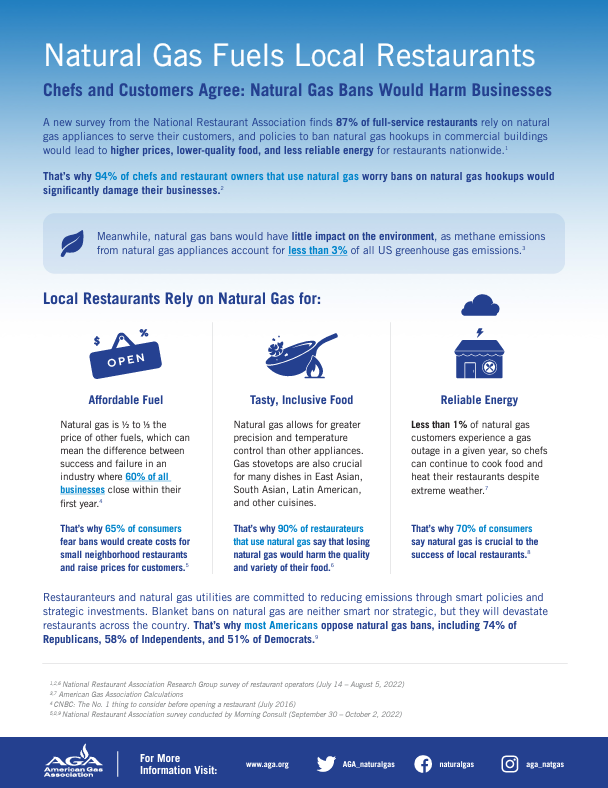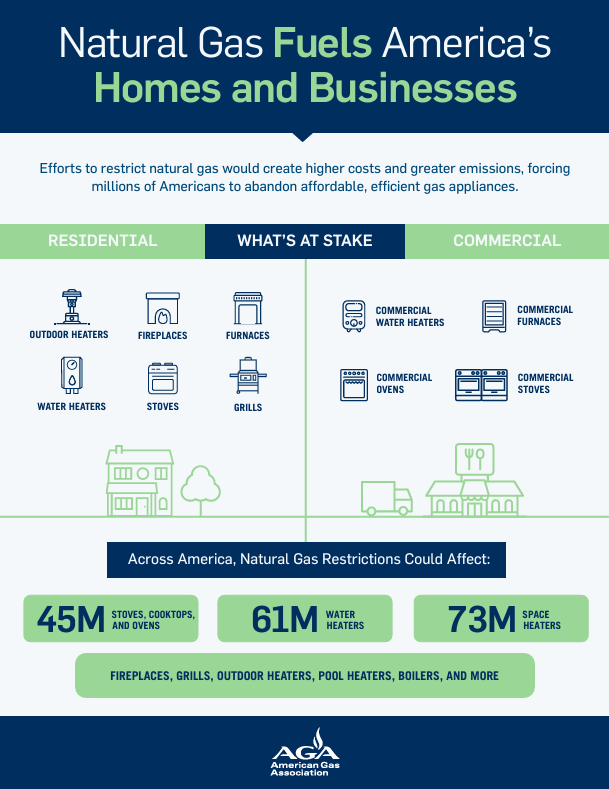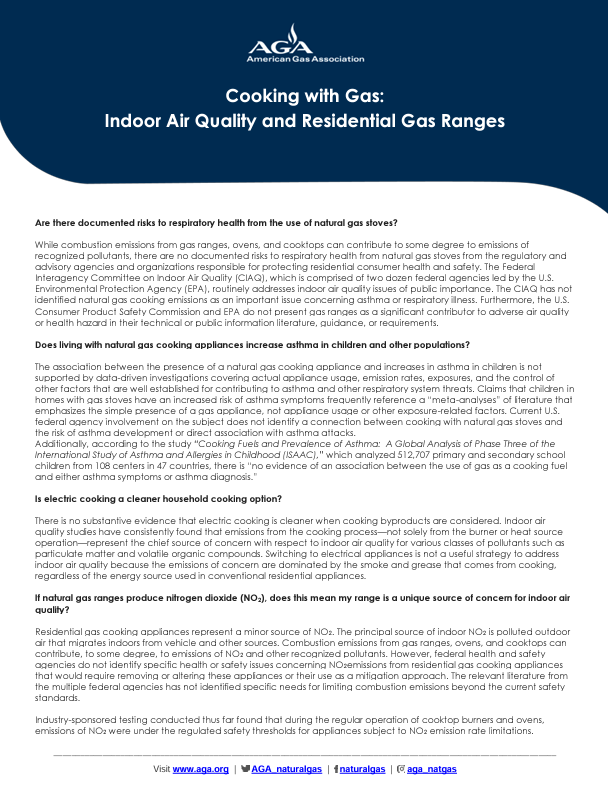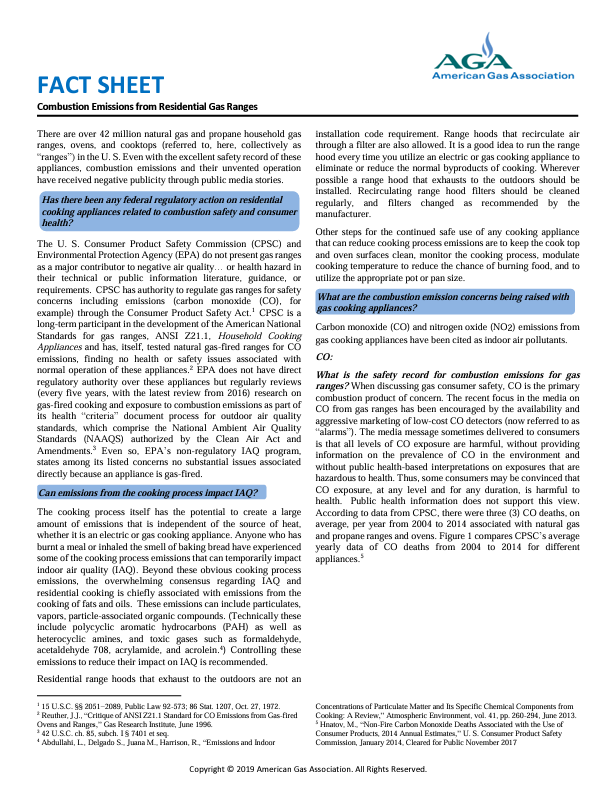Natural Gas: Critical for American Communities
Customers deserve to have choices about the energy they use to heat their homes and cook their food. And they need to have the right information to make an informed decision.

Natural Gas: Critical Energy for American Communities
Customers deserve to have choices about the energy they use to heat their homes and cook their food. And they need to have the right information to make an informed decision. In some parts of the country, decisions about energy and appliances that people can access and use are being made without sound science. On this page you will find credible data and analysis that will illustrate the continued role for natural gas to help reliably, affordably, safely and environmentally responsibly meet our nation’s energy needs.
Learn More about Cooking with Gas
AGA Responses to Media, Research and Advocacy Organizations
Responses to Research & Advocacy Organizations
- World Health Organization funded study finds gas stoves not associated with childhood or adult asthma
- Read AGA’s press release in response to the study.
- WTOP: Research shows no connection between asthma and gas stoves
- AGA Response to “NO2 exposure and health outcomes from gas stoves” by Kashtan, et. al. (May 2024)
- Environmental Research Letters: Evaluating Net Life-Cycle Greenhouse Gas Emissions Intensities from Gas and Coal at Varying Methane Leakage Rates (June 2023)
- Environmental Science & Technology: Composition, Emissions and Air Quality Impacts of Hazardous Air Pollutants in Unburned Natural Gas from Residential Stoves in California (October 2022)
- AGA Response to the Sierra Club Petition for Rulemaking to list Heating Appliances as a Source Category and to issue New Source Performance Standards under Clean Air Act Section 111 (September 2022)
- AGA Letter to the American Medical Association (August 2022) – AGA submitted a letter on August 26, 2022 to the American Medical Association to express concern about the incomplete and inadequate scientific basis of the AMA House of Delegates Resolution 439.
- Gradient Corporation Letter to AGA (August 2022) – Gradient Corporation reviewed scientific evidence related to the American Medical Association’s recently adopted Resolution 439. The letter outlines their findings and notes significant limitations in the studies addressing gas-fired residential cooking appliances and childhood asthma.
- Environmental Science & Technology: “Home is Where the Pipeline Ends: Characterization of Volatile Organic Compounds Present in Natural Gas at the Point of the Residential End User” (June 2022)
- Environmental Science & Technology: “Methane and NOx Emissions from Natural Gas Stoves, Cooktops, and Ovens in Residential Homes,” Environmental Science & Technology” (January 2022)
- The Journal of Environmental Research Letters: “A Decade of the U.S. Energy Mix Transitioning Away from Coal: Historical Reconstruction of the Reductions in the Public Health Burden of Energy” (May 2021)
Responses to Media
- AGA Response to Washington Post (January 2024)
- NPR Story (October 2023)
- Full Frontal with Samantha Bee (June 2021)
- Wall Street Journal (April 2021)
- The Weather Channel (April 2021)
- The Atlantic (October 2020)

$1,132
Homes that use natural gas for heating, cooking and clothes drying save an average of $1,132 per year compared to homes using electricity.



